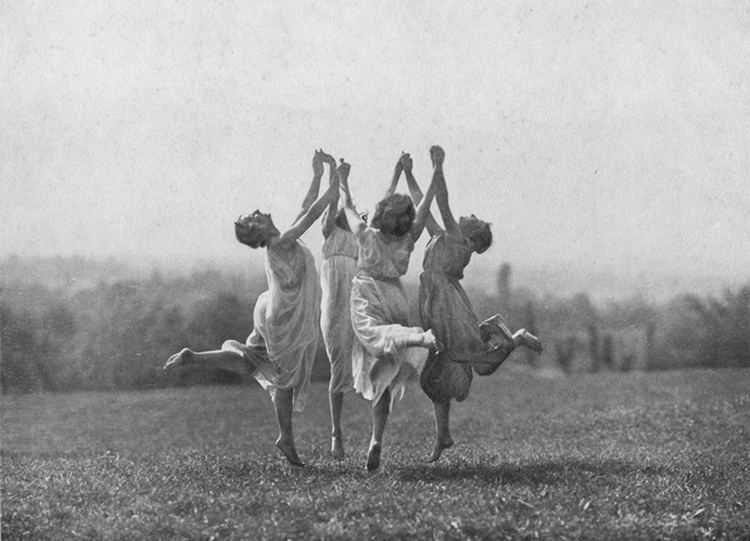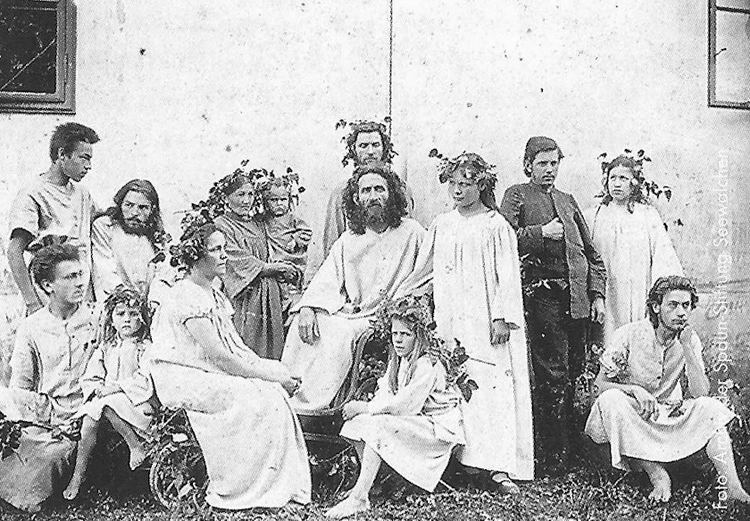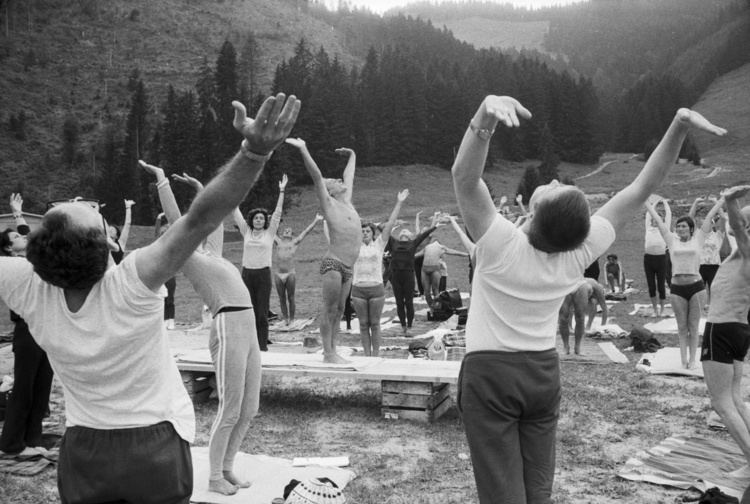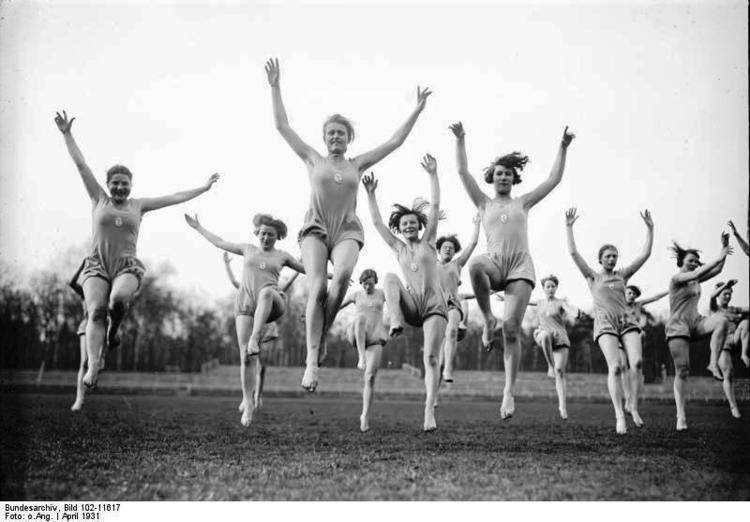
Lebensreform ("life reform") was a social movement in late 19th-century and early 20th-century Germany and Switzerland that propagated a back-to-nature lifestyle, emphasizing among others health food/raw food/organic food, nudism, sexual liberation, alternative medicine, and religious reform and at the same time abstention from alcohol, tobacco, drugs, and vaccines.
Contents
- Lebensreform licht luft leben 7 full
- History
- Contemporary books that influenced Lebensreform
- References

Important Lebensreform proponents were Sebastian Kneipp, Louis Kuhne, Rudolf Steiner, Karl Wilhelm Diefenbach, Fidus (Hugo Höppener), Gustav Gräser, and Adolf Just. Some practitioners of Lebensreform such as Bill Pester, Benedict Lust, and Arnold Ehret emigrated to California in the late 19th (Lust) or first half of the 20th century and directly influenced the later hippie movement. One group, called the "Nature Boys", settled in the California desert. eden ahbez, a member of this group, wrote a hit song called Nature Boy (recorded in 1947 by Nat King Cole), popularizing the homegrown back-to-nature movement to mainstream America. Eventually, a few of these Nature Boys, including Gypsy Boots, made their way to Northern California in 1967, just in time for the Summer of Love in San Francisco.

One noticeable legacy of Lebensreform in Germany today are the Reformhaus ("reform house") retail stores that sell naturopathic medicine and organic food.

Lebensreform licht luft leben 7 full
History

The Lebensreform movement in Germany originally was a politically diverse movement. There were hundreds of groups across Germany dedicated to some or all of the concepts associated with Lebensreform: ecology and organic farming, vegetarianism, naturism (Nacktkultur), and abstinence from alcohol and tobacco. Dozens of magazines, books, and pamphlets were published on these topics. Some groups were made of socialists, some were apolitical, and some were rightwing and nationalist in outlook.

One outstanding prophet of Lebensreform was the painter Karl Wilhelm Diefenbach (1861-1913), pacifist and tolstoyan anarchist who founded the community Himmelhof near Vienna. Among his disciples were three painters: Hugo Höppener (Fidus), Frantischek Kupka and Gusto Graeser. In 1900 Graeser became the cofounder and inspiring pioneer of the community Monte Verità near Ascona, Switzerland. Monte Verità attracted lots of artists from all of Europe, during World War I conscientious objectors from Germany and France. Gusto Graeser, thinker and poet, greatly influenced the German Youth Movement and such writers as Hermann Hesse and Gerhart Hauptmann. He was the model for the master figures in the books of Hermann Hesse. Richard Ungewitter and Heinrich Pudor were also well known advocates of a strain of Lebensreform that emphasized nudism and was explicitly anti-Semitic, which eventually became Freikörperkultur movement. The Freikörperkultur movement eventually broadened and came to include socialists with no strains of racism like Adolf Koch, who for example organized factory workers to go on nudist hikes.

Contemporary environmental movements, the organic food movement, many fad diets and "back to nature" movements, as well as "folk movements", have their roots in the Lebensreform movement's emphasis on the goodness of nature, the harms to society, people, and to nature caused by industrialization, the importance of the whole person, body and mind, and the goodness of "the old ways".
Another stream based on völkisch Romanticism gradually became part of Nazi ideology by the 1930s, known as blood and soil. As early as 1907, Richard Ungewitter published a pamphlet called Nudity and Culture (which sold 100,000 copies), arguing that the practices he recommended would be "the means by which the German race would regenerate itself and ultimately prevail over its neighbours and the diabolical Jews, who were intent on injecting putrefying agents into the nation's blood and soil".
The extremists promoting rightwing ideology eventually became popular among Nazi Party officials and their supporters, including Heinrich Himmler and Rudolph Höss, who belonged to the right-wing farming organization the Artaman League. When other groups were being banned or disbanded due to political conflict during the 1930s, the extreme nationalist ideology became connected with Naziism. The German Life Reform League broke apart into political factions during this time. The Nationalist physician Artur Fedor Fuchs began the League for Free Body Culture (FKK), giving public lectures on the healing powers of the sun in the "Nordic sky", which "alone strengthened and healed the warrior nation". Ancient forest living, and habits presumed to have been followed by the ancient tribes of Germany, were beneficial to regenerating the Aryan people, according to Fuchs' philosophy. Hans Sùren, a prominent former military officer, published Man and the Sun (1924), which sold 240,000 copies; by 1941 it was reissued in 68 editions. Sùren promoted the Aryan master race concept of physically strong, militarized men who would be the "salvation" of the German people.
Recently, Germany has been experiencing a growth of rightwing extremist organizations with ecological connections, including organic farming. Since the 1990s, a number of rightwing farmers have set up organic farming operations in Mecklenburg. The politically far-right environmental-interest magazine Umwelt und Aktiv (Environment and Active) is believed to receive support from the far-right nationalist National Democratic Party of Germany (NPD). German publications Der Spiegel and Süddeutsche Zeitung have also covered the link between far-right extremists and certain organic farming projects in Germany, and it has received government and academic attention as well. Speculation is that such rightwing projects may be attempts to revive the Nazi-era Artaman League, to soften the image of the NPD, or to pull supporters away from the leftwing Alliance '90/The Greens (Green Party) of Germany, which is Europe's most successful environmentalist political party.
